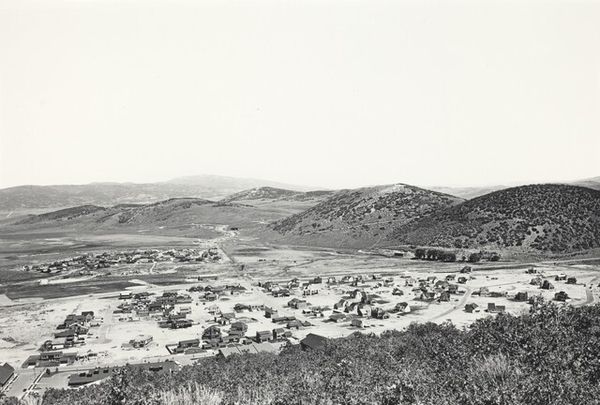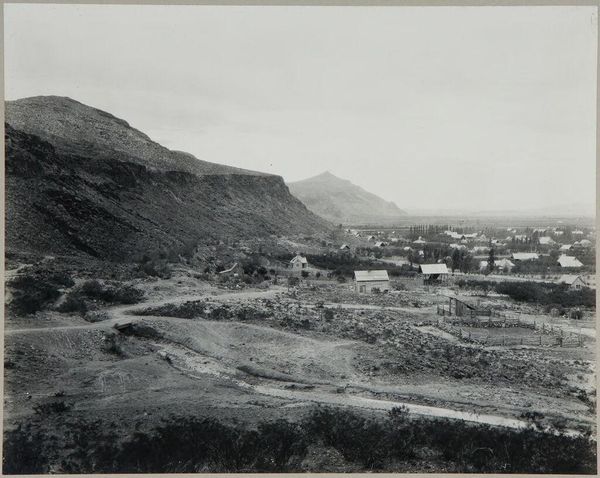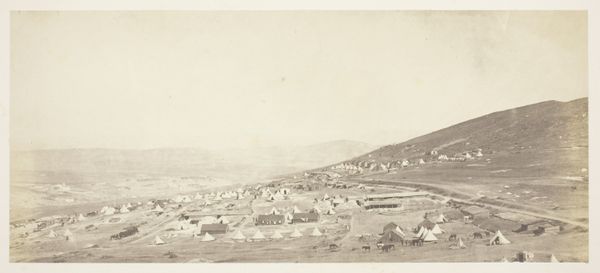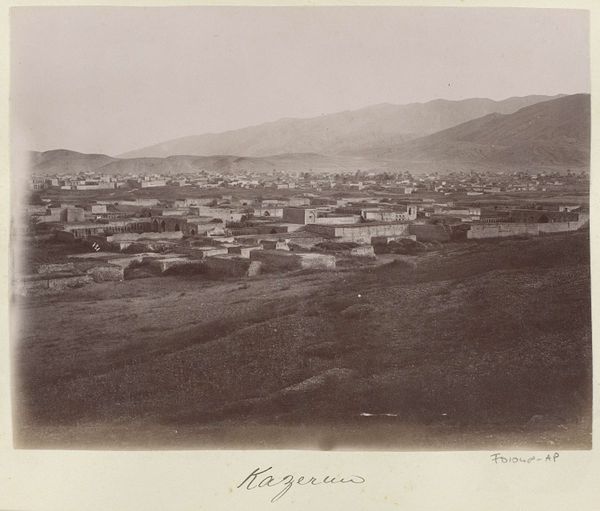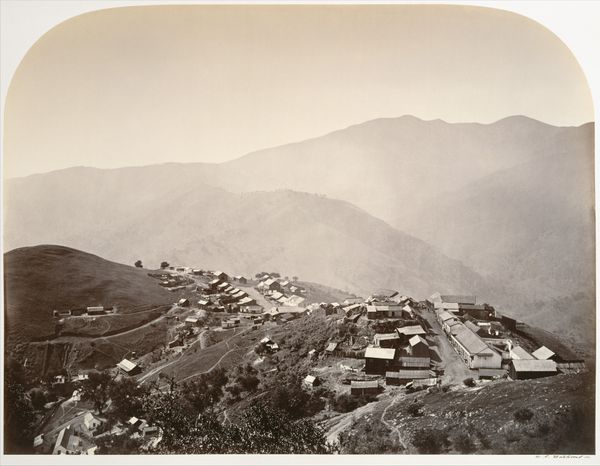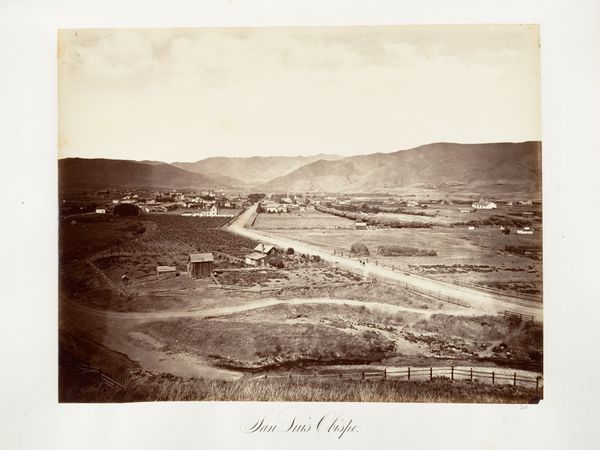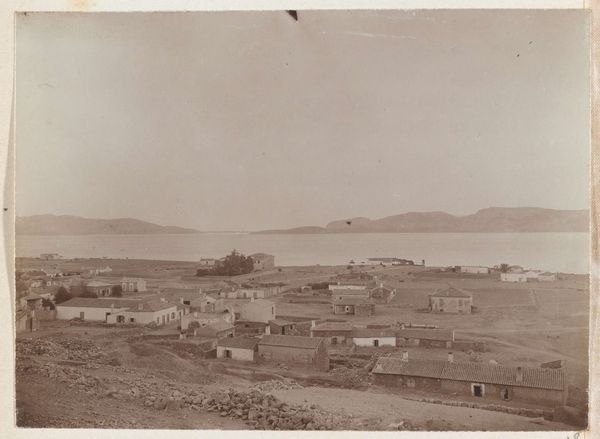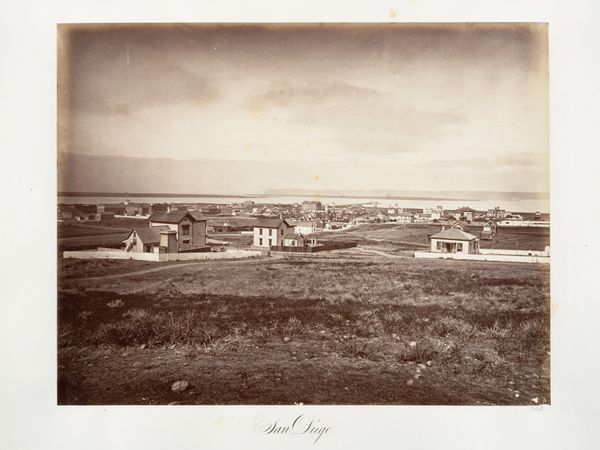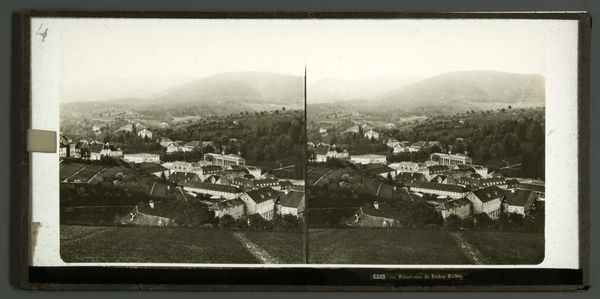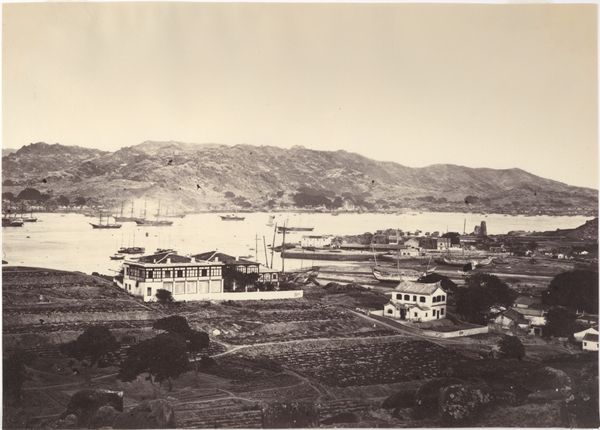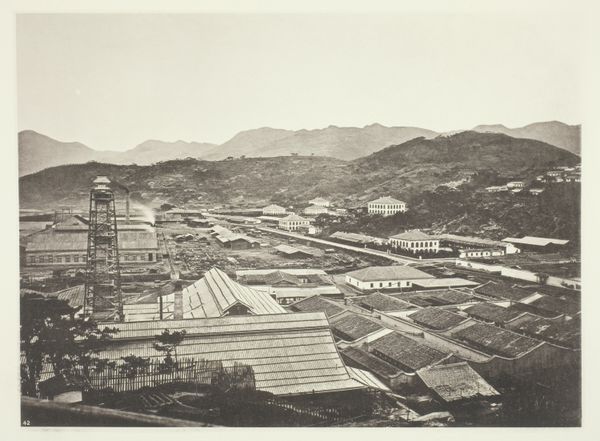
photography
#
excavation photography
#
machinery photography
#
conceptual-art
#
black and white photography
#
postmodernism
#
landscape
#
black and white format
#
warm monochrome
#
b w
#
photography
#
black and white theme
#
black and white
#
monochrome photography
#
monochrome
Dimensions: image: 16.2 x 24.1 cm (6 3/8 x 9 1/2 in.) sheet: 20.2 x 25.3 cm (7 15/16 x 9 15/16 in.)
Copyright: National Gallery of Art: CC0 1.0
Curator: This photograph is titled "Lemmon Valley, looking North" by Lewis Baltz, possibly taken between 1977 and 1978. Baltz is known for his stark, black and white images that dissect the built environment and its impact on the American West. Editor: Wow, that's...bleak. It feels so removed, almost like peering into a dollhouse town that nobody actually lives in. And yet there's a strange serenity in that desolation, a muted sense of survival. Curator: The stark monochrome really accentuates that feeling. We can view this through a lens that critiques the homogenizing effect of suburban development. How land use and standardized architecture impact regional identity and contribute to a kind of visual erasure. Editor: Erase? I think it amplifies it, almost cruelly. The harshness of the environment—it’s all rocks and scrub—is magnified by those little boxes humans plant in its middle, right? It's a testament to ambition and grit…but maybe ambition divorced from beauty. Like, "We will subdue this landscape, one tract house at a time!". Curator: Exactly. And within this framework we can consider issues of environmental exploitation, resource allocation, and the displacement of indigenous populations. The visual vocabulary is cold, almost clinical, forcing us to confront the socio-political implications without romanticism. Editor: True. There's something about the complete lack of frills. Even the houses have no visible landscaping, all these buildings… they’re like a declaration that functionality trumps poetry. Though I find the stark contrasts, the hard-edged shadows against the muted hills, strangely… beautiful. Like a brutal kind of elegance. Curator: And yet it lacks individual expression. This aesthetic then acts as a form of social commentary, questioning ideals of the American dream and its potential consequences for marginalized communities. We must consider that photographic objectivity is itself a construct, one used here to expose unsettling realities. Editor: Huh. I guess you're right. Seeing it from that point-of-view kinda softens the bleakness a bit, it brings empathy, the ghosts that dwell there. Now I see the question marks woven in with the buildings themselves. It gives a story to tell for generations and new artists who would like to challenge the norm. Curator: Indeed, this photograph gives so much. Hopefully listeners can now also understand all the socio-economical dynamics happening on site. Editor: Thanks for your expertise. I for one, am heading home to put a personal stamp on my small corner of the world, and challenge that landscape, one succulent at a time!
Comments
No comments
Be the first to comment and join the conversation on the ultimate creative platform.
